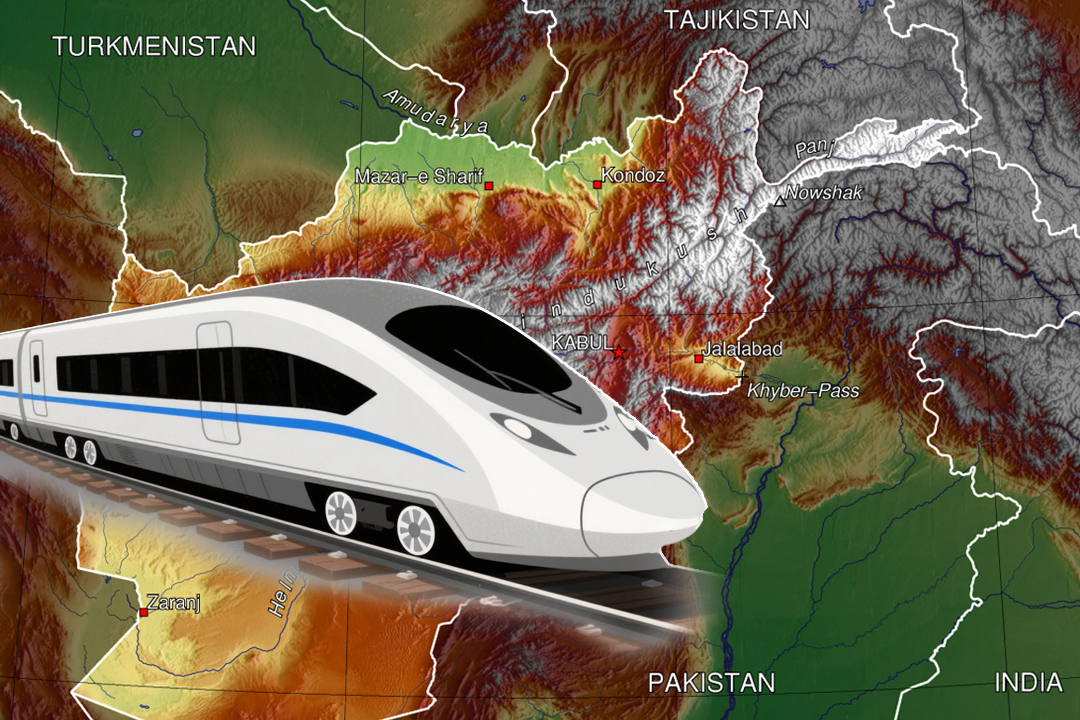[Opinion]Commentary: Forging a New Path for Eurasia Through Afghanistan

Central and South Asia are set to be connected via Afghanistan.
Afghanistan, Pakistan and Uzbekistan have made a significant stride toward regional collaboration by signing an agreement to start a feasibility study of the much-anticipated Trans-Afghan Railway project. The signing occurred in Kabul on July 17, with the foreign ministers of all three countries in attendance.
The project to construct the Kabul Corridor railway, connecting Termez in Uzbekistan to Peshawar in Pakistan via Mazar-i-Sharif and Kabul, appears particularly significant. The section from Termez to Mazar-i-Sharif, constructed by Uzbekistan, has already been completed. The project’s estimated cost is $4.6 billion. Once finished, this railway will span over 573 kilometers (356 miles) across Afghanistan, establishing a direct land connection between Central Asia and, via Pakistani territory, the Indian Ocean.
It is projected to handle 18 million to 20 million tons of cargo annually, reducing shipping times from Central Asia to Pakistani ports from weeks to days, and lowering transportation costs by at least 30% to 40%. Construction is set to start this year, with completion expected by 2030. The route is occasionally called by the names of the cities it traverses: Termez, Naibabad, Logar and Kharlachi.
The project’s primary participants will be Uzbekistan, Pakistan and Afghanistan. Like the China-Kyrgyzstan-Uzbekistan railway project, a consortium will be formed to collaborate with potential partners and investors. Kazakhstan and Russia are confirmed as key project partners. Both countries have expressed their support and taken concrete actions.
On April 8, the Russian Ministry of Transport announced its support for the Trans-Afghan Railway project. Then, on July 11, during Kazakhstan Foreign Minister Murat Nurtleu’s visit to Afghanistan, Astana and Kabul signed a memorandum to build this railway.
In addition to the Kabul corridor mentioned earlier, discussions are underway regarding constructing the 1,468-kilometer Mazar-i-Sharif-Herat-Kandahar-Chaman railway. It would form an alternative railway line passing through the western Afghan provinces of Farah, Nimroz, Helmand, and Kandahar, leading to Pakistani ports.
The Kandahar Corridor aligns with the Turgundi-Herat-Kandahar-Spin Boldak railway route, which Turkmenistan is jointly promoting with Kazakhstan. In September 2024, Ashgabat started constructing the first part of the railway from Turgundi station to Herat.
The route via Kandahar could lead to Pakistan and Iran. Since 2020, Iran has been building the Chabahar-Zahedan railway, which is planned to extend to Nimroz, Dilaram and Kandahar. India, which is involved in Iran’s infrastructure and Chabahar port, finds this significant.
The immediate priority is to secure funding sources for the railway routes. Before the Taliban’s rise to power, the Asian Development Bank, the World Bank, and several Western financial institutions expressed interest in financing these projects. The original plan allocated around five years for implementation and estimated costs between $4.5 billion and $8 billion.
Currently, all efforts must start again. Negotiations are underway with a few Gulf Cooperation Council countries, and discussions have likely also begun with China, which has ambitious plans to develop Afghanistan’s mineral resources.
If successful, these new transport routes could restore Central Asia’s prominence, transforming it into a key transport hub for the entire Eurasian continent, echoing its prominent role during the Great Silk Road era.
Afghanistan’s potential
Creating efficient logistics routes through Afghanistan will be essential for its economic development, given the country’s substantial growth potential, which is primarily driven by its rich mineral resources.
Earlier, a senior U.S. general told the New York Times that Afghanistan’s mineral potential was “staggering.” The article also reported that an internal U.S. Defense Department memo suggested the country could become the “Saudi Arabia of lithium.”
The country has some of the world’s largest unexploited reserves of copper, coal, iron, gas, cobalt, mercury, gold, lithium and thorium, valued at over $1 trillion.
The potential for rare earth metals such as praseodymium, cerium, lanthanum, neodymium, and gadolinium is exceptionally high, given the vast market demand and high prices. In 2014, based on research conducted by the U.S. Geological Survey (USGS), Afghan authorities announced their value was around $3 trillion.
Regarding Afghanistan’s role in energy supply and transit, the promising TAPI gas pipeline project is noteworthy. Named after the countries Turkmenistan, Afghanistan, Pakistan and India, this project has been under discussion for many years.
This 1,814-kilometer pipeline would extend from Turkmenistan’s Galkynysh gas field to Fazilka in India, passing through Herat and Kandahar in Afghanistan, and Quetta and Multan in Pakistan. It is expected to have a capacity of 33 billion cubic meters of gas annually and an estimated cost of $8 billion to $10 billion.
Since retaking power in August 2021, the Taliban have pursued international recognition and investment, despite the global community withholding formal recognition due to reports of human rights abuses in Afghanistan.
The international community’s recognition of the Taliban government continues to be a complex issue. Nevertheless, recent developments show notable progress. On July 3, in Kabul, Afghan Foreign Minister Amir Khan Muttaqi met with Dmitry Zhirnov, the Russian Ambassador to Afghanistan. During this meeting, the ambassador officially declared Russia’s decision to recognize the Islamic Emirate of Afghanistan. All five Central Asian nations also maintain embassies in Kabul.
In September 2023, China appointed a new ambassador to Kabul, and an Afghan embassy is also functioning again in Beijing. Although this does not constitute official recognition, many view these developments as Beijing’s de facto recognition.
Since 2021, approximately 200 mining contracts have been signed between Afghanistan and various Chinese firms, resulting in around 150,000 jobs in the mining sector.
Afghanistan, situated within Greater Central Asia, borders China, Iran and Pakistan. Enhancing its living standards and fostering development into a prosperous nation depend on collaborative efforts among these neighbors and beyond.


